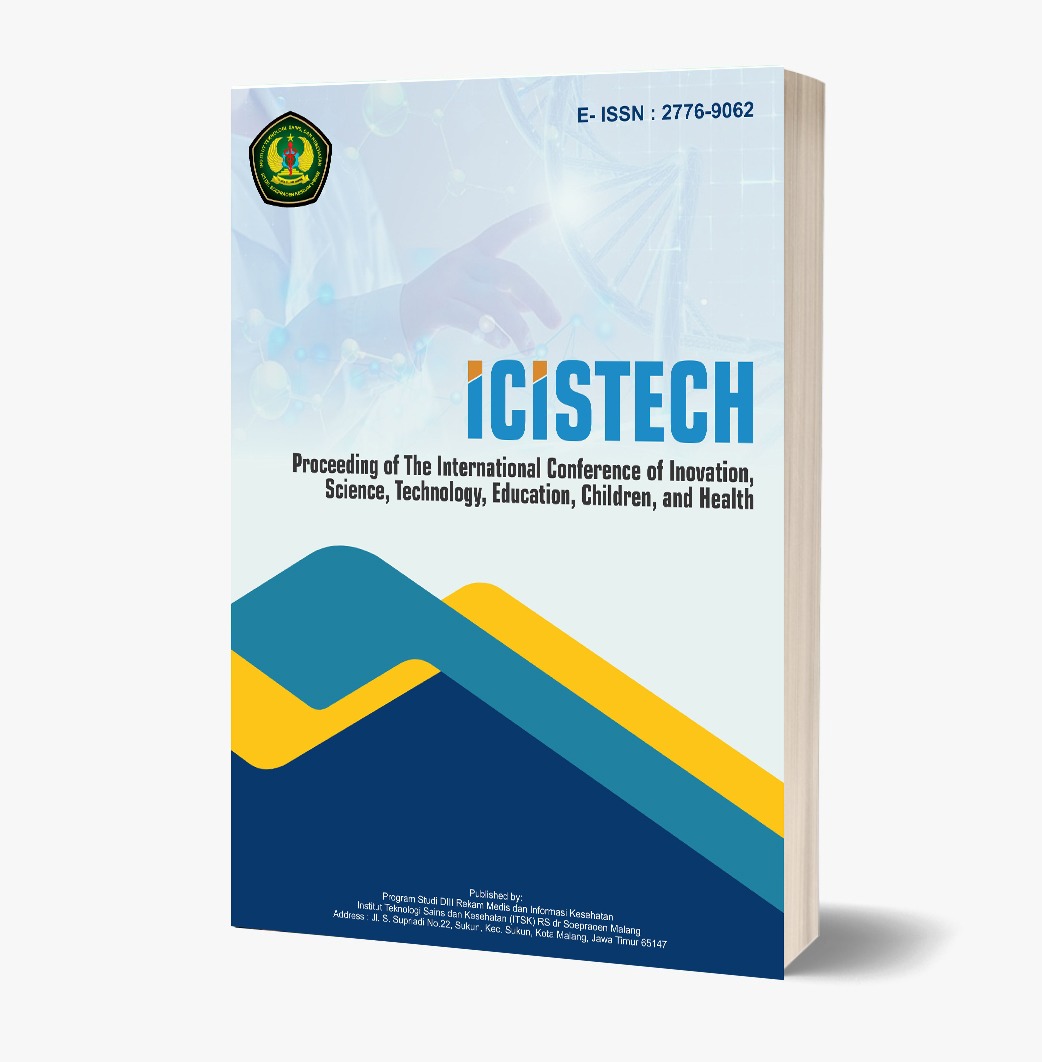The Effect of Work Load and Organizational Culture onHealth Workers Satisfaction at Dr. Soepraoen Hospitals Malang
DOI:
https://doi.org/10.62951/icistech.v1i1.3Keywords:
Work Load, Organizational Culture, Health Workers SatisfactionAbstract
Job satisfaction is one of several factors that are very important to get maximum results. Satisfaction can be influenced by several factors, organizations need to pay attention to these factors to increase employee job satisfaction. The research objective was to determine the influence of workload and organizational culture on work satisfaction of health workers at Tk. II DR. Soepraoen Malang. The number of samples taken was 55 health workerswith the saturated sample method. Methods of datacollection with a survey with a questionnaire as a tool and interviews. Path analysis is used to obtain results so that workload is found to have a positive effect on job satisfaction.
References
Anggeria, E., & Maria, M. (2018). Relationship between Supervision and Implementation of Nursing Care in InpatientRooms, 10th Floor of the Royal Prima Medan General Hospital in 2017. JUMANTIK (Scientific Journal of Health Research), 3 (2), 78-97..
Destiningrum, M., & Adrian, Q. J. (2017). Sistem Informasi Penjadwalan Dokter Berbassis Web Dengan Menggunakan Framework Codeigniter (Studi Kasus: Rumah Sakit Yukum Medical Centre). Jurnal Teknoinfo, 11(2), 30-37.Ariffin, A. A. M., & Maghzi, A. (2012). A preliminary study on customer expectations of hotel hospitality: Influences of personal and hotel factors. International Journal of Hospitality Management, 31(1), 191-198.
Hariningsih, E. (2014). Kajian Teori Model Penelitian Untuk Menilai Kesuksesan Dan Evaluasi Sistem Informasi Rumah Sakit. Jurnal Bisnis, Manajemen, dan Akuntansi, 2(1)
Irawan, D., & Novita, S. (2017). Sistem Informasi Manajemen Rumah Sakit Harapan Bunda Pringsewu Lampung. Jurnal TAM (Technology Acceptance Model), 2, 47-52.
Susanto, G. (2012). Sistem Informasi Rekam Medis Pada Rumah Sakit Umum Daerah (RSUD) Pacitan Berbasis Web Base. Speed-Sentra Penelitian Engineering dan Edukasi, 3(4).
Winasih, R., Nursalam, N., & Kurniawati, N. D. (2015). Cultural organization and quality of nursing work life on nurses performance and job satisfaction in Dr. Soetomo Hospital, Surabaya. Jurnal Ners, 10(2), 332-342..
Zahara, Y., Sitorus, R., & Sabri, L. (2011). Faktor-Faktor Motivasi Kerja: Supervisi, Penghasilan, dan Hubungan Interpersonal Mempengaruhi Kinerja Perawat
Pelaksana. Jurnal Keperawatan Indonesia, 14(2), 73-82. Ammenwerth, E Ehlers, Hirsch, B & Gratl, G 20077, HIS-Monitor. An Approach To Assess The Quality Of Inforation Processing In Hospitals, International Journal Of Medical Informatics, 76, pp. 216225
O’Brien, James A. 2005. Pengantar Sistem Informasi Akuntansi : Perspektif Bisnis dan Manajerial, Terjemahan. 12th edition. Jakarta: Salemba Empat.
Lestari, S. P. (2016). Hubungan Komunikasi Pemasaran dan Promosi dengan Keputusan Memilih Jasa Layanan Kesehatan (Studi pada Rumah Sakit Islam Lumajang). Majalah Ilmiah Inspiratif, 2(2).
Khajouei, R., Abbasi, R., & Mirzaee, M. (2018). Errors and causes of communication failures from hospital information systems to electronic health record: a record-review study. International journal of medical informatics, 119, 47-53.
Obeidat, B. Y. (2012). The relationship between human resource information system (HRIS) functions and human resource management (HRM) functionalities. Journal of Management Research, 4(4), 192-211.
Royce, T. J., Basch, E., & Bekelman, J. E. (2020). Supervision requirements in the 2020 hospital outpatient prospective payment system: Implications for cancer care in the United States. JAMA oncology, 6(6), 819-820.
Koivu, A., Saarinen, P. I., & Hyrkas, K. (2012). Who benefits from clinical supervision and how? The association between clinical supervision and the work‐related well‐being of female hospital nurses. Journal of clinical nursing, 21(17‐18), 2567-2578.
Blum, A. B., Shea, S., Czeisler, C. A., Landrigan, C. P., & Leape, L. (2011). Implementing the 2009 Institute of Medicine recommendations on resident physician work hours, supervision, and safety. Nature and science of sleep, 3, 47.
Hsiao, J. L., Chang, H. C., & Chen, R. F. (2011). A study of factors affecting acceptance of hospital information systems: a nursing perspective. Journal of Nursing Research, 19(2), 150-160.
Park, I., Sharman, R., & Rao, H. R. (2015). Disaster Experience and Hospital Information Systems. Mis Quarterly, 39(2), 317-344.
Balaraman, P., & Kosalram, K. (2013). E-Hospital Management & Hospital Information Systems-Changing Trends. International Journal of Information Engineering & Electronic Business, 5(1).
Khalifa, M. (2014). Technical and human challenges of implementing hospital information systems in Saudi Arabia. Journal of Health Informatics in Developing Countries, 8(1)
Masrom, M., & Rahimly, A. (2015). Overview of data security issues in hospital information systems. Pacific
Asia Journal of the Association for Information Systems, 7(4), 5.
Downloads
Published
How to Cite
Issue
Section
License
Copyright (c) 2024 Proceeding of The International Conference of Inovation, Science, Technology, Education, Children, and Health

This work is licensed under a Creative Commons Attribution-ShareAlike 4.0 International License.













